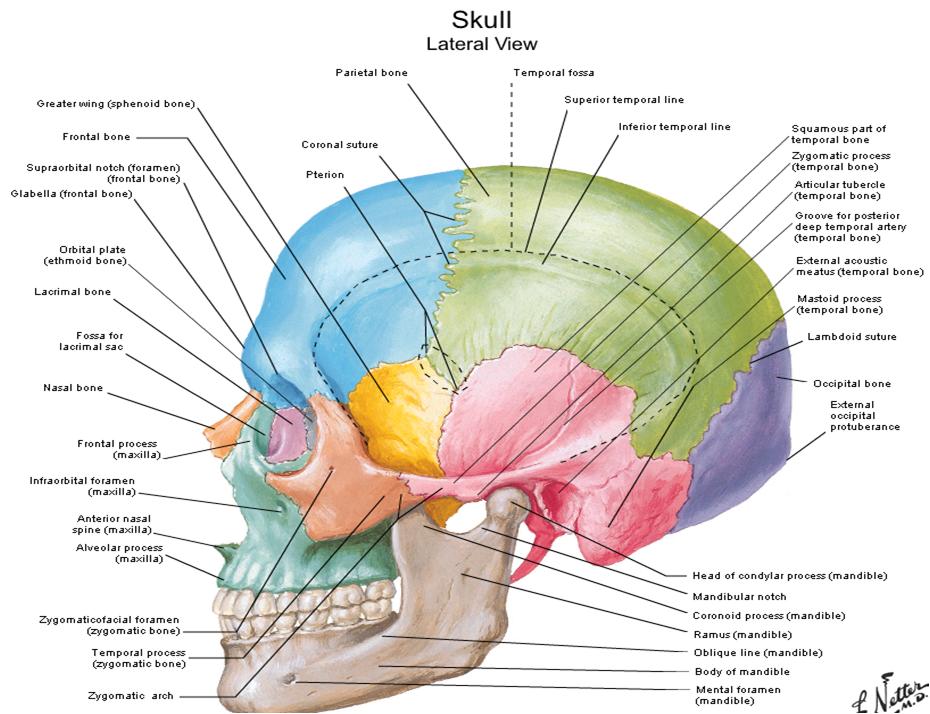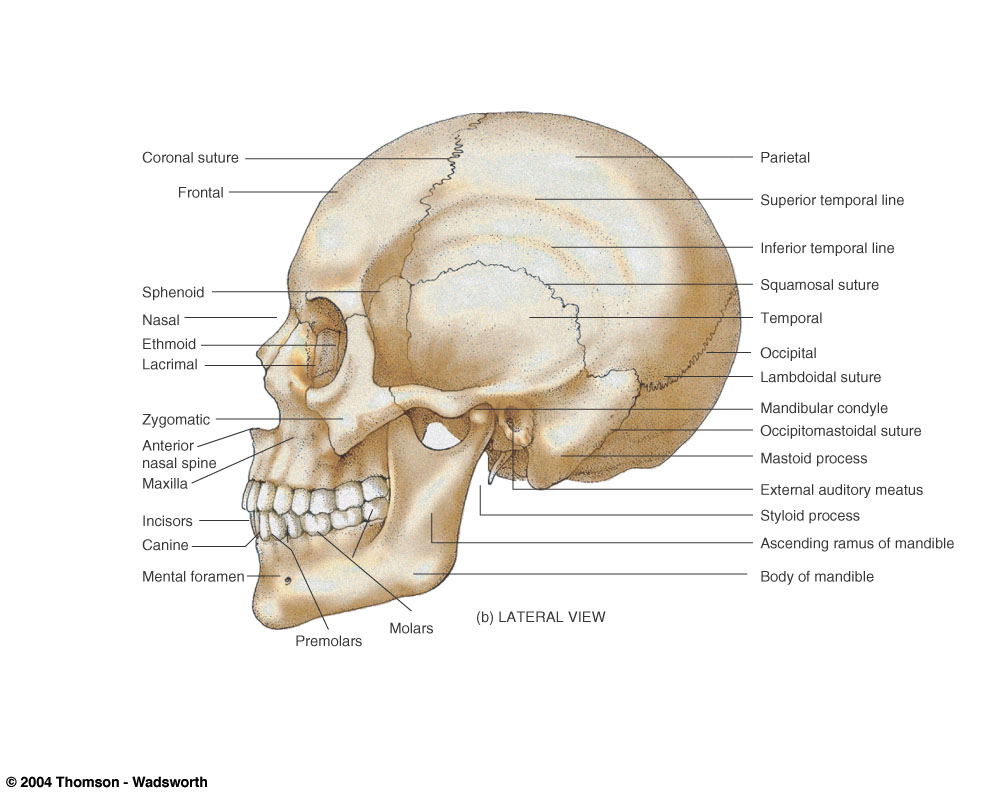
The zygomaticomaxillary suture links the zygomatic bone and the maxilla. The frontozygomatic suture articulates the frontal and zygomatic bones. The frontonasal suture joins the frontal bone and nasal bones. Petrotympanic suture - between the temporomandibular joint and the tympanic cavity Petrosquamous suture - between the petrous and squamous parts of the temporal bone Spheno-occipital suture - between the sphenoid bone and occipital bone Petro-occipital suture - between the occipital bone and petrous part of the temporal bone Transverse palatine suture - between the palatine process of the maxillary bone and the palatine bone Median palatine suture - between the hotizontal plates of the palatines Temporozygomatic suture - between the temporal bone and zygomatic bone Occipitomastoid suture - between the occipital bone and mastoid process of the temporal bone Sphenoparietal suture - between the sphenoid bone and parietal bone Sphenofrontal suture - between the frontal bone and sphenoid bone Squamous suture - between the parietal bone and temporal bone Lambda - convergence of the sagital and lambdoid suture (resembles to a greek letter 'lambda')Ĭoronal suture - between the frontal bone and the parietal boneīregma - convergence of the saggital and coronal sutures Lambdoid suture - between the parietal bone and occipital bone Sagittal suture - between two parietal bones Metopic suture - found in children on the midline of the frontal bone Intermaxillary suture - between two maxilla Zygomaticomaxillary suture - between zygoma and the maxilla Key facts Anterior aspect of skullįrontonasal suture - between the frontal bone and nasal bonesįrontozygomatic suture - between the frontal bone and zygomatic bone This article will explain the anatomy, structure and function of the sutures of the skull. In fetal skull, the sutures are wide and allow slight movement during birth, but later in life they become rigid and fixed. They are also referred to as the synarthroses. These joints are fixed, immovable, and they have no cavity. The dense fibrous tissue that connects the sutures is made mostly out of collagen. They appear as intricate thin lines that mark the adherence between the bones and the growth and closure of the cranial fontanelles. This indicates that the red panda is most likely to share a recent common ancestor with giant panda, based on the evidence that is provided.The sutures of the skull, also referred to as the cranial sutures, are fibrous joints that connect the bones of the skull. However, unlike red pandas, bear doesn’t share the traits with giant panda, since they don’t have bamboo as their main diet. All the traits are evolved from their diet. Last but not least, both pandas have enlarged wrist bone, also known as opposable “thumb”, which are evolved to hold the bamboo stick. They are comforted, large and thick to help pandas to chew tough bamboo. Next, they have similar strucutre of teeth. Both have extra-thick skull and strong jaw muscles. 
Furthoremore, based on evidence from skull anatomy, red panda and giant panda share a similar trait about skull.

However, unlike red panda and giant panda, bears don’t eat bamboo and don’t live in Bamboo forest in China.

Both consume bamboo as their main diet and live in bamboo forest in China. Red panda shares many traits with giant panda. Based on the information from the evidence, it indicates that red panda is most likely to share the recent common ancestor with giant panda than Bear.







 0 kommentar(er)
0 kommentar(er)
